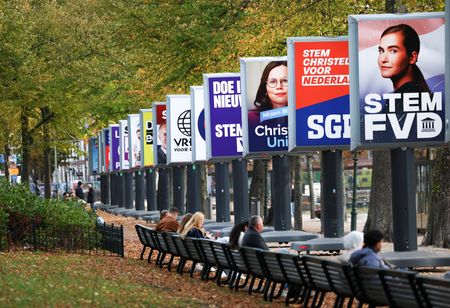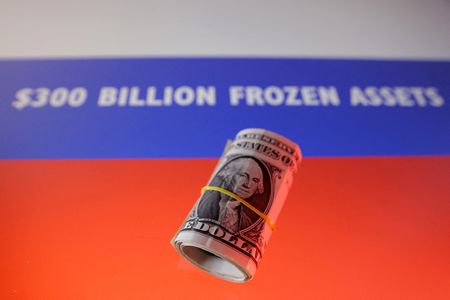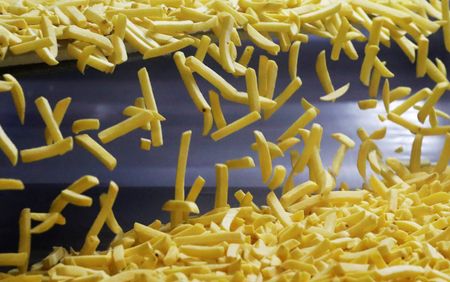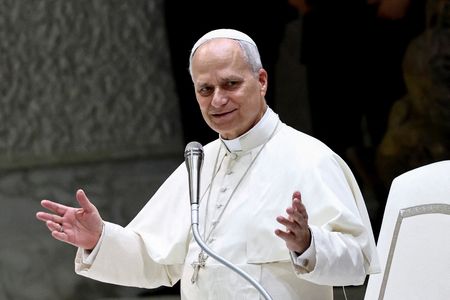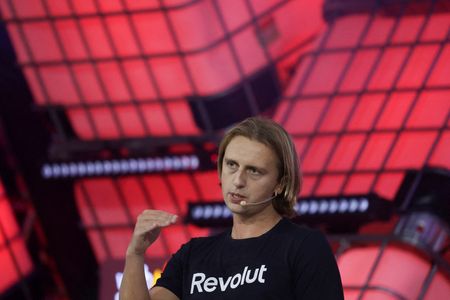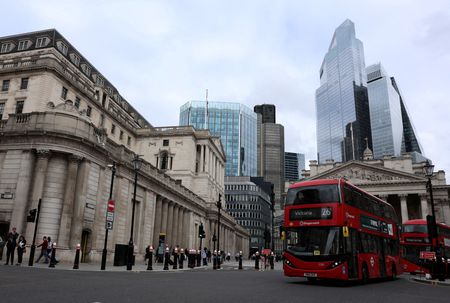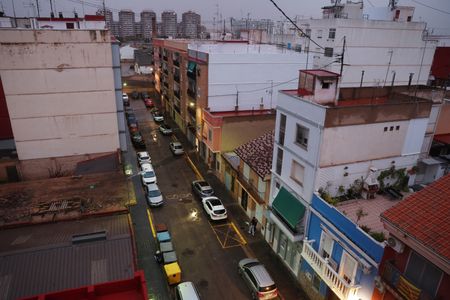By Canan Sevgili, Arda Dipova and Jakob Van Calster
(Reuters) -The Netherlands will hold a general election on October 29 after the previous government collapsed. Geert Wilders’ far-right PVV leads polls though some support has shifted to Christian Democrats.
Here is what you need to know about the election:
WHAT’S AT STAKE?
Opinion polls indicate that the housing market, healthcare, and immigration top the list of concerns among Dutch voters.
Nearly two-thirds want answers on a shortage of affordable housing, while healthcare resonates with older voters and immigration remains a key issue for right-wing supporters, according to a poll by broadcaster RTL.
The upcoming election follows the collapse on June 3 of the previous short-lived coalition over stricter immigration policies.
All parties agree on the need to increase construction and defence spending, but differ on how this should be financed.
WHEN DO POLLS OPEN AND CLOSE?
Voting takes place on Wednesday, October 29. Polls open at 7:30 a.m. (0530 GMT), though some locations may open as early as midnight. All polls close at 9 p.m. (1900 GMT).
A first exit poll is expected to be aired on TV and radio at 9 p.m.
WHEN WILL THE RESULT BE KNOWN?
Seats are apportioned by dividing the total votes by the number of seats. Every party that gets enough votes for at least one seat makes it into parliament.
Ballots are counted by hand, with results expected to trickle in through the evening and overnight. The Electoral Council, the central electoral committee for elections to the Lower House, Upper House and the European Parliament, determines the official results.
WHICH PARTIES ARE RUNNING AND WHO ARE THEIR LEADERS?
Freedom Party (PVV) – Geert Wilders
The far-right PVV has put an asylum moratorium and fighting “woke-ideology gone mad” central to its campaign. “This is YOUR country! The Netherlands is full, overfull, bursting at the seams,” the first words of its manifesto read.
Wilders has proposed saving funds by closing the borders, sending male Ukrainian refugees back to Ukraine, and halting development aid to finance energy and healthcare benefits.
Polling around 34 seats versus current 37 seats.
Christen-Democratisch Appel (CDA) – Henri Bontenbal
The CDA fell to a historical low in the 2023 election, but it has managed to recover lost ground by campaigning on the promise of stable government and affordable housing under its new leader.
The CDA is neck and neck with GroenLinks-PVDA in the polls with both estimated to take home around 15% of votes.
Polling around 23 seats versus current 5 seats.
GroenLinks-PVDA – Frans Timmermans
A combined list of the recently merged Green Party and the Social Democrats, is running on familiar centre-left policies and has made ‘solidarity’ its main message.
Fronted by ex-European Commissioner Frans Timmermans, the list has promised more affordable housing, a cleaner environment, and a more equitable distribution of wealth.
Polling around 25 seats versus current 25 seats.
D66 – Rob Jetten
The liberal democratic D66 has swung upwards during the campaign and is now polling above the VVD with promises to build more houses and spend more on education among its core campaign themes.
Polling around 16 seats versus current 9 seats.
People’s Party for Freedom and Democracy (VVD) – Dilan Yeşilgoz
The party previously led by former prime minister Mark Rutte has campaigned on tax breaks for businesses and extra defence spending financed by cutting social security.
The VVD has trended downwards under Yeşilgoz, with the party headed for a historic defeat after already having lost ten seats at the last election.
Polling around 15 seats versus current 24 seats.
Others
Current government party NSC is set to disappear from the Parliament, with other parties such as the right-wing JA21 projected to take around 8% of the vote and a plethora of smaller parties hovering around the 2%-3% mark.
WHAT HAPPENS NEXT?
After the vote, parties will begin talks to form a coalition and secure a majority in parliament. With 15 parties set to be represented in the legislature, a majority may need at least four parties. The PVV leads in the polls, but most parties have ruled out joining it in government.
Coalition parties negotiate an agreement setting out goals for the next four years. The king officially appoints the new cabinet, which then presents its program to parliament.
(Reporting by Canan Sevgili, Arda Dipova, Jakob Van Calster; Additional reporting, Bart H. Meijer, Michal Aleksandrowicz; Editing by Toby Chopra)

